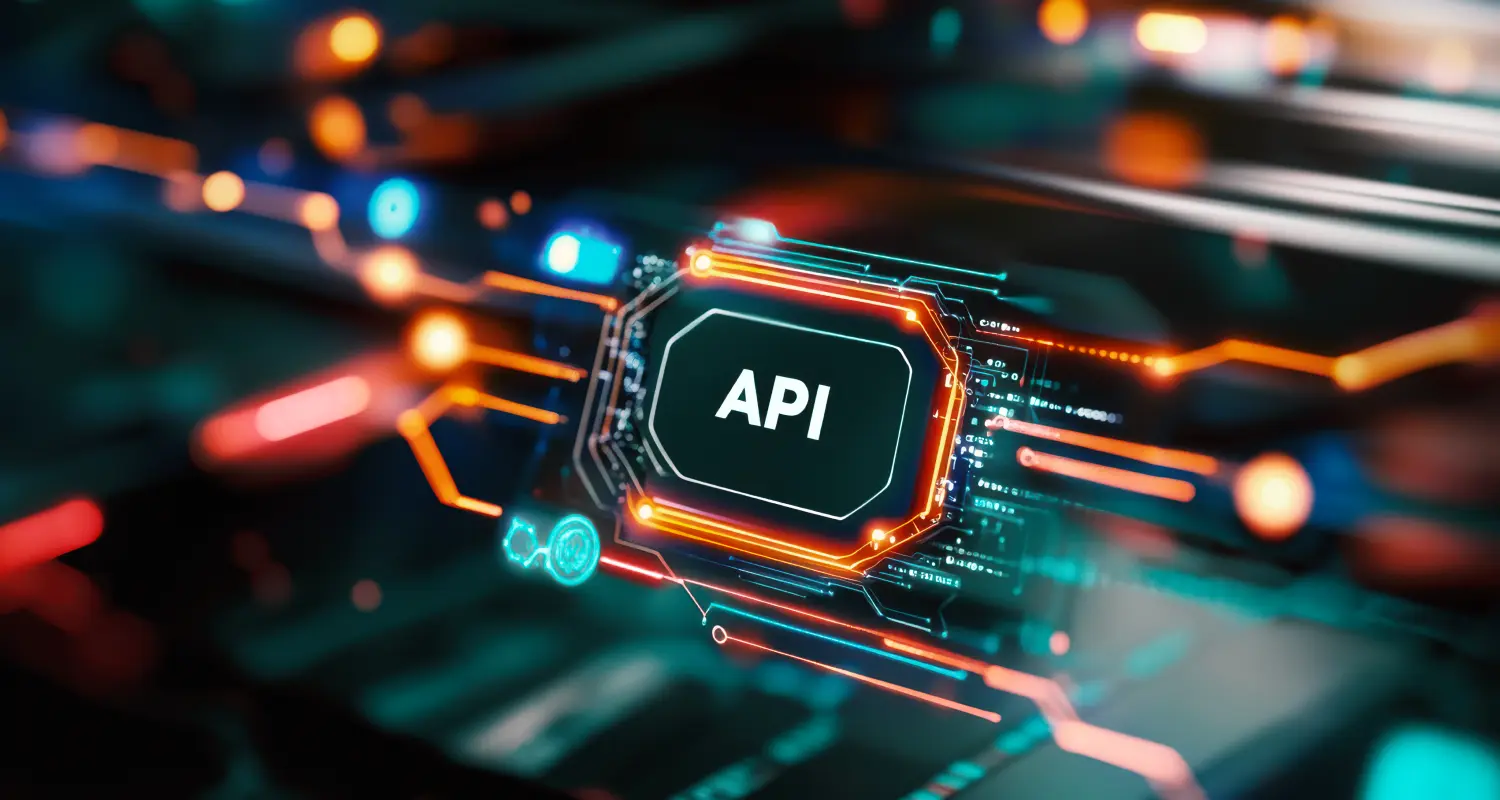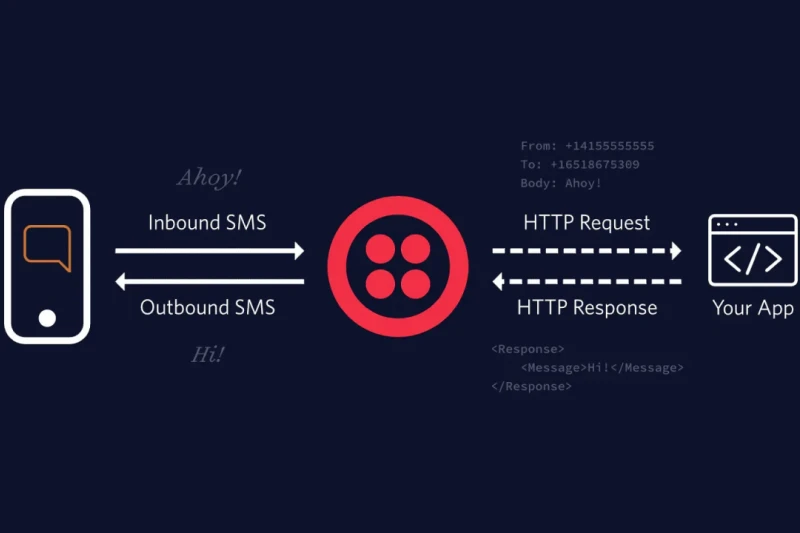
API development has evolved from a technical role to a fundamental element of strategic business agility in the constantly changing digital landscape. It serves as the digital link that enables organizations to innovate quickly, integrate effortlessly, and expand their operations with unmatched efficiency.
As companies become more dependent on interconnected systems and data-driven insights, a deep comprehension of the intricacies of API development has shifted from a secondary consideration to a vital strategic necessity.
1. What does API mean in software development?
1.1. Definition
An API, or Application Programming Interface, as a set of rules, enables applications to interact without requiring deep knowledge of each other’s internal operations. This allows them to use the API as a shared data and service exchange interface.
1.2. Types of APIs

The contemporary API landscape is characterized by various architectural styles, including RESTful API, SOAP API, and Web API, each serving distinct purposes and catering to specific use cases.
RESTful APIs, leveraging lightweight data interchange formats like JSON and XML, are widely favored for their inherent scalability and ease of use.
In contrast, while more complex and resource-intensive, SOAP APIs are often preferred in enterprise environments where stringent security protocols are paramount. Cost variations arise from the complexity of implementation and the specific technology stack used.
2. API development process
2.1. The role of API in web applications
Websites and applications achieve diverse functionalities by leveraging APIs and essential intermediaries. For instance, instead of building a payment system from scratch, a website can utilize Stripe’s API (Payment API) to process transactions securely. User verification is also streamlined through APIs, allowing for integration with established identity services.
Furthermore, APIs facilitate the retrieval of dynamic data, ensuring websites display up-to-date information from external sources. Real-time interactions, such as chat features or notification systems, are enabled through APIs provided by services like Twilio (Communication API).

Additionally, access to cloud-based resources is crucial for modern web applications. APIs from providers like Amazon Web Services (AWS), Google Cloud API, and Microsoft Azure (API services) enable the utilization of scalable storage, computing, and other services.
In essence, APIs are the foundation for integrating various functionalities and services, enhancing web applications’ capabilities and overall user experience.
2.2. How APIs enable communication between client and server
APIs facilitate communication between the client (user’s browser or app) and the server. The client sends a request to the server through an API, and the server processes the request, retrieves the necessary data, and sends a response back to the client.
This client-server interaction is typically governed by standard HTTP methods (GET, POST, PUT, DELETE) and fortified by robust Authentication (OAuth, JWT) protocols, ensuring secure and reliable data exchange.
3. Best language for API development
3.1. Popular languages for API development
When exploring languages preferred for constructing APIs, it’s vital to weigh factors such as performance efficiency, capacity for scaling, the level of community support available to developers, and robust frameworks. Here’s a look at some widely adopted options:
Python:
- Python’s reputation for precise, readable code and its versatile nature positions it as a favored choice for rapid API creation.
- Frameworks like Flask and Django REST framework offer powerful tools that simplify the process of building APIs.
- Python’s strength is further amplified by its extensive collection of libraries, especially in fields like data science and machine learning, which are frequently integrated into contemporary APIs.
JavaScript (Node.js):
- Node.js excels at developing high-throughput, real-time APIs thanks to its asynchronous, event-driven design.
- The Express.js framework stands out for its straightforwardness and flexibility in crafting RESTful APIs.
- Its ability to utilize JavaScript across client and server environments makes it a cohesive choice for full-stack development projects.
Java:
- Java is recognized as a dependable and scalable language commonly employed for constructing enterprise-level APIs.
- The Spring Boot framework streamlines the development of Java-based APIs, providing features that enhance security, data management, and more.
- Java’s platform independence and strong type-checking make it well-suited for intricate and mission-critical applications.
Go (Golang):
- Go is increasingly valued for its exceptional performance and concurrency capabilities, rendering it ideal for building scalable APIs.
- Its simple design and efficiency are very beneficial to API development.
- Its simplicity and efficiency make it a strong contender for microservices architectures.
C# (.NET):
- C# and the .NET framework provide a potent foundation for building APIs, particularly within the Microsoft ecosystem.
- ASP.NET Core is a modern framework that facilitates the creation of high-performance RESTful services.
3.2. Choosing the right language for your API:
Choosing the correct programming language for your API is crucial as it impacts performance, scalability, and maintenance. Instead of picking a popular language, consider the following key points:
Match the language to your needs:
- Performance: For fast applications, use Go (Golang) or Node.js. Java or C# may be better for complex data processing.
- Scalability: If you expect growth, choose languages with many users, like Go or Java. Python and Node.js can also work with the proper setup.
- Data management: Python is ideal for large datasets due to its libraries, while Java is strong for data management. Use Node.js for real-time data.
Consider your team’s skills:
- Current skills: Use a language your team knows to save time and costs.
- Developer availability: Look for popular languages like Python and JavaScript to find skilled developers more easily.
- Learning curve: Consider how challenging it will be for your team to learn a new language.

Look at frameworks:
- Framework stability: Choose languages with strong frameworks like Django REST (Python) or Express.js (Node.js) that speed up development.
- Library availability: A rich library ecosystem can save development time.
Plan for long-term support:
- Community engagement: Select languages with active communities for ongoing support.
- Corporate support: Languages supported by major companies usually have better maintenance.
- Documentation: Good documentation is essential for long-term use.
Consider the API’s purpose:
- Microservices: For microservices, opt for lightweight languages like Go or Node.js.
- System integration: Ensure compatibility with your existing systems and cloud platforms like AWS, Azure, or Google Cloud.
4. How long does it take to build an API?
To ensure a project’s successful completion, it’s essential to understand the estimated development timeframe for an API and the variables that dictate it, as this allows for precise resource allocation. A range of pivotal elements significantly affect the overall duration of API development.
The time it takes to build an API is influenced by several key considerations. These include the API’s inherent complexity, the scope of its features, the thoroughness of testing procedures, and the competency of the development team.
Typical development durations fluctuate based on the project’s complexity. Basic APIs can be completed within a few weeks, while intricate APIs with extensive functionalities and integrations may require several months of development.
5. Custom API development services
5.1. What are custom API development services?
Custom API development services focus on building Application Programming Interfaces that meet each business’s specific needs and goals.
Unlike standard APIs, these custom solutions are created from scratch to fit a company’s unique workflows and data needs. These services cover the entire API process, including design, development, testing, deployment, and ongoing maintenance.
5.2. Benefits
- First, they provide specific functions designed to meet your business needs without extra features.
- Second, they improve performance with code and design matching your use. Third, they enhance security by using protocols that directly address your concerns.
- Finally, they are built for growth, allowing them to handle more data as your business expands. Custom APIs create a precise tool that increases efficiency and flexibility in operations.

5.3. How to choose the right API development service provider
Choosing the right partner for custom API development is essential. Start by checking their skills in the technologies related to your project, like specific programming languages or cloud platforms.
Look at their portfolio to see their experience with similar projects and industries. Good communication matters; they understand your needs and give clear updates.
Finally, review their pricing to ensure it fits your budget and provides good value for their services. These factors will help you find a trustworthy and skilled API development services company and show API development services and how they can enhance your business.
6. The impact of APIs on development and business
Why API development is crucial for seamless software integrations highlights the pivotal role of APIs in connecting disparate systems, streamlining operational workflows, and fostering innovation. They accelerate development cycles by enabling code reuse and simplifying integration.
APIs streamline business processes by allowing seamless integration with third-party services, such as payment gateways, CRM systems, and marketing automation tools. This interconnectedness not only enhances the efficiency of internal operations but also opens up avenues for businesses to offer novel services and experiences to their customers.
By leveraging APIs, companies can adapt quickly to market changes and integrate emerging technologies, ensuring they remain competitive in the rapidly evolving digital landscape.
7. API development costs
Here’s a comprehensive breakdown:
Complexity and features:
- Simple APIs: Basic APIs that retrieve or send data with minimal processing are the least expensive. Examples include simple data retrieval APIs or essential authentication services.
- Complex APIs: APIs involving intricate data processing, real-time communication, or complex business logic incur higher costs. Examples include APIs for financial transactions, advanced data analytics, or real-time streaming services.
- Feature richness: The number and complexity of features directly impact costs. Features like authentication, authorization, rate limiting, and data validation add to development time and expenses.
Design and architecture:
- API design: Well-defined API design, including clear endpoints, data models, and documentation, requires careful planning and expertise, increasing initial costs.
- Architectural style: The choice between RESTful, SOAP, or GraphQL architectures affects development complexity and costs. RESTful APIs are generally less expensive than SOAP APIs, while GraphQL offers flexibility but might require specialized skills.
- Microservices architecture: Developing APIs for a microservices architecture can increase costs due to the need for decentralized management and communication.
Chosen technology stack and tools:
- Programming language: Developer rates vary depending on the chosen language. Languages like Java or C# might have higher developer rates than Python or Node.js.
- Frameworks and libraries: Using mature frameworks and libraries can reduce development time but might involve licensing costs or dependencies.
- Cloud services: Utilizing cloud services like AWS, Azure, or Google Cloud for API hosting and management adds to the operational costs.
Development team experience and location:
- Developer expertise: Experienced developers command higher rates but can deliver high-quality APIs faster, reducing overall costs.
- Team location: Offshore development might offer lower labor costs, but communication and time zone differences can impact project timelines.
- Team size: The size of the team will directly affect the amount of labor hours, therefore affecting cost.
Ongoing maintenance and updates:
- API maintenance: Regular maintenance, including bug fixes, security updates, and performance optimization, is essential and adds to ongoing costs.
- API versioning: Implementing API versioning to support backward compatibility requires careful planning and adds to development and maintenance efforts.
- Monitoring and logging: Setting up robust monitoring and logging systems to track API performance and identify issues added to infrastructure and operational costs.
Testing and quality assurance:
- Unit testing: Ensuring each component of the API works as intended.
- Integration testing: Verifying that different parts of the API work together correctly.
- Security testing: Testing the API for vulnerabilities.
- Performance testing: Testing the API’s ability to handle load.
7.2. Average cost range for API development
- Simple APIs: $5,000 to $15,000
- Medium Complexity APIs: $15,000 to $50,000
- Complex APIs: $50,000 to $100,000+
These are estimated ranges, and actual costs can vary significantly. It’s essential to obtain detailed quotes from reputable API development providers to get accurate cost estimates for your specific project.
8. Conclusion
API development is a strategic investment that enables innovation, streamlines integrations, and enhances business processes. By understanding the intricacies of APIs and building strong partnerships, businesses can discover new opportunities and strengthen their place in the digital world. Explore API development as a strategic investment for your technology projects. Contact us for a consultation on your API projects.




